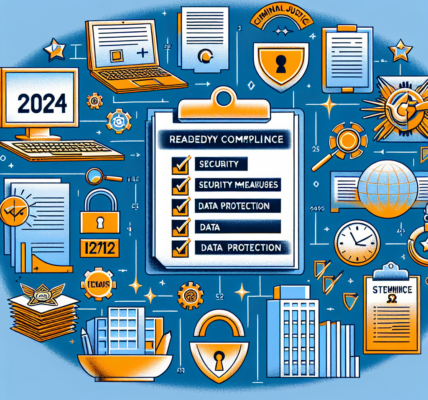In an era where data breaches and cyber threats loom large, ensuring the security of sensitive information is paramount. For organizations interacting with criminal justice information, CJIS Ready multi-factor authentication (MFA) setup is not just a compliance requirement; it is a critical line of defense against unauthorized access. The stakes are high—failure to implement adequate security measures could result in severe legal repercussions, loss of trust, and significant financial penalties. This guide will meticulously unravel the nuances of CJIS compliance in MFA and provide actionable steps to implement a CJIS Ready multi-factor authentication setup effectively.
Understanding the Importance of CJIS Compliance in MFA
The Criminal Justice Information Services (CJIS) Division sets stringent standards to ensure the security of sensitive information related to law enforcement agencies. Non-compliance can lead to data breaches, which can undermine the integrity of the entire criminal justice system. Organizations must understand that CJIS compliance in MFA transcends mere obligation; it serves as a shield protecting not only the data but also the reputation of the agency involved. The ramifications of data exposure can reverberate far beyond fines, affecting public trust and operational capacity.
MFA is a cornerstone of CJIS compliance due to its ability to add layers of security that single-factor authentication cannot provide. By requiring multiple forms of verification before granting access, MFA significantly diminishes the risk of unauthorized access. This is especially crucial for agencies that handle sensitive criminal justice data. The integration of CJIS Ready MFA solutions can drastically reduce vulnerabilities, ensuring that only authorized personnel can access critical information. As cyber threats evolve, so must the strategies employed to combat them.
Moreover, implementing CJIS-compliant MFA is not solely about meeting regulatory standards; it is also about fostering a culture of security awareness within an organization. Training personnel on the importance of MFA and how to use it effectively is essential. By instilling a security-first mindset, organizations can empower their employees to recognize and act against potential threats, thereby creating a formidable defense against cybercriminals. This holistic approach ensures that security measures are not just a checkbox but an integral part of organizational operations.
Key Steps for Implementing CJIS Ready Multi-Factor Authentication
To successfully implement a CJIS Ready multi-factor authentication setup, organizations should begin with a comprehensive risk assessment. This step involves identifying sensitive information and determining the potential threats posed to that information. Engaging stakeholders from various departments—such as IT, compliance, and operations—can provide a well-rounded perspective on the security landscape. Understanding the specific requirements outlined by the CJIS Security Policy is crucial, as it will serve as a guiding document throughout the implementation phase.
Next, selecting the appropriate MFA solutions tailored to the unique needs of the organization is imperative. Various options exist, including biometric authentication, hardware tokens, and SMS-based verification. Organizations should carefully evaluate these options based on practicality, ease of use, and regulatory compliance. For example, while SMS-based verification is widely used, it may not meet CJIS standards due to potential vulnerabilities. Adopting a robust solution, such as hardware tokens or biometric methods, can enhance security and align with regulatory requirements.
Once the solution is selected, the focus shifts to deployment and user training. It is vital to roll out the MFA solution gradually and ensure that all users are adequately trained on how to utilize it effectively. A phased approach allows organizations to troubleshoot potential issues and refine the process before full-scale implementation. Additionally, providing ongoing support and resources reinforces the importance of MFA, ensuring that employees remain vigilant and adept at using these security measures. Organizations should also consider regular reviews and updates to their MFA strategies, keeping pace with evolving security threats and technological advancements.
In conclusion, implementing a CJIS Ready multi-factor authentication setup is an essential strategy for any organization dealing with sensitive criminal justice information. By understanding the importance of CJIS compliance and following a systematic approach to MFA implementation, organizations can significantly bolster their security posture. The stakes are high, and the cost of inaction is too great to ignore. Take the first step toward safeguarding your data and maintaining compliance by evaluating your current authentication methods. Embrace the transformative power of CJIS Ready MFA today and become a leader in data security within the criminal justice landscape.




